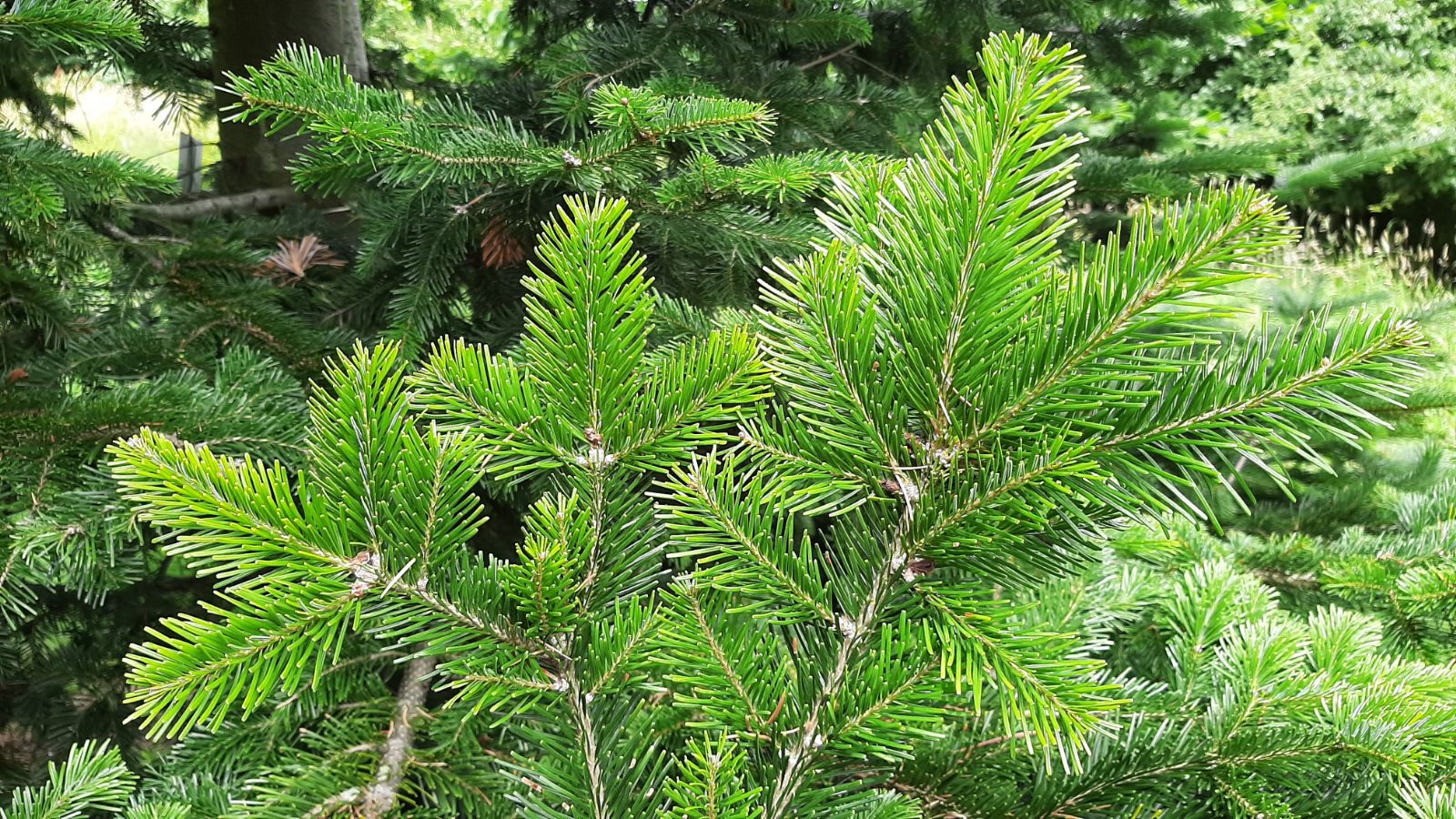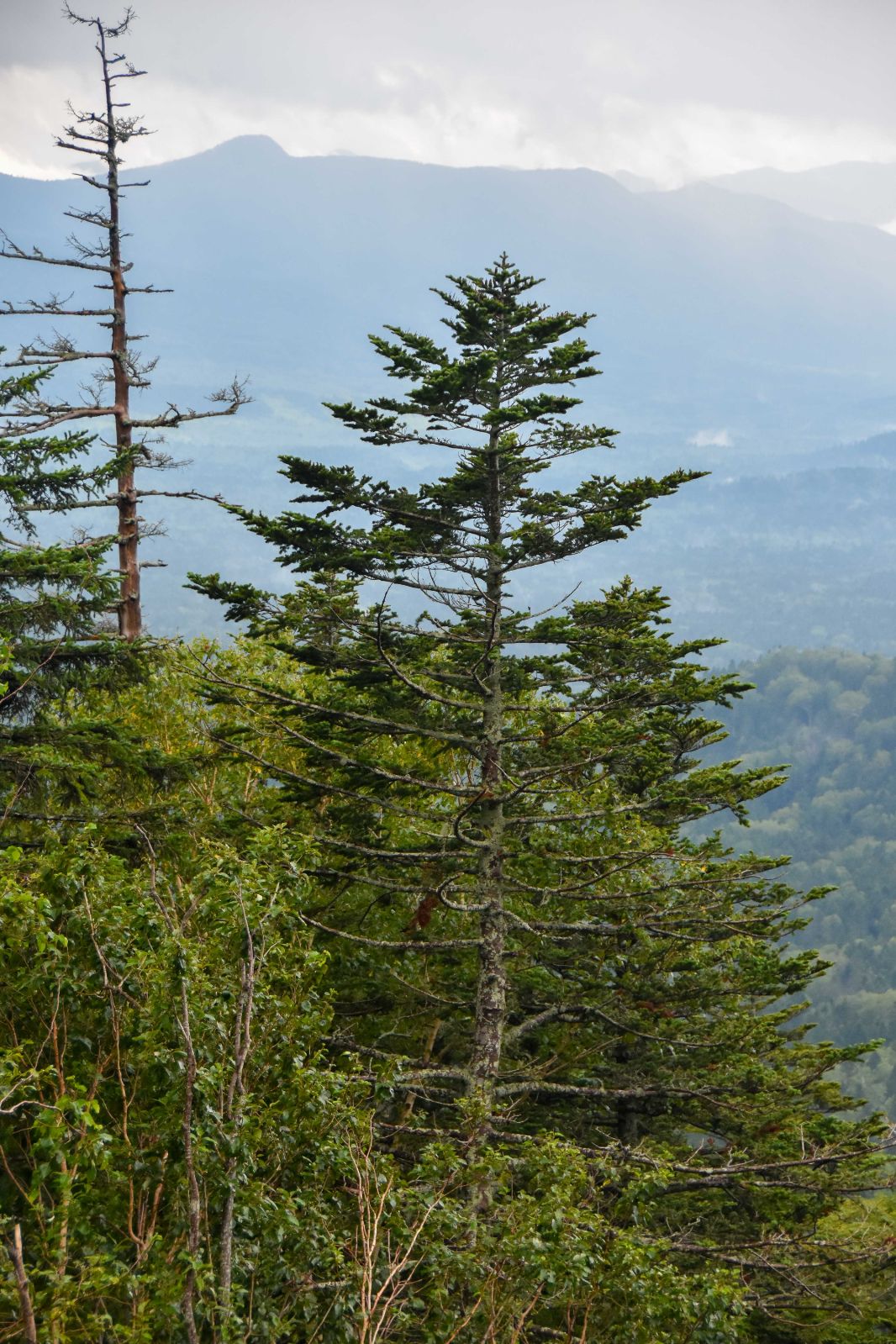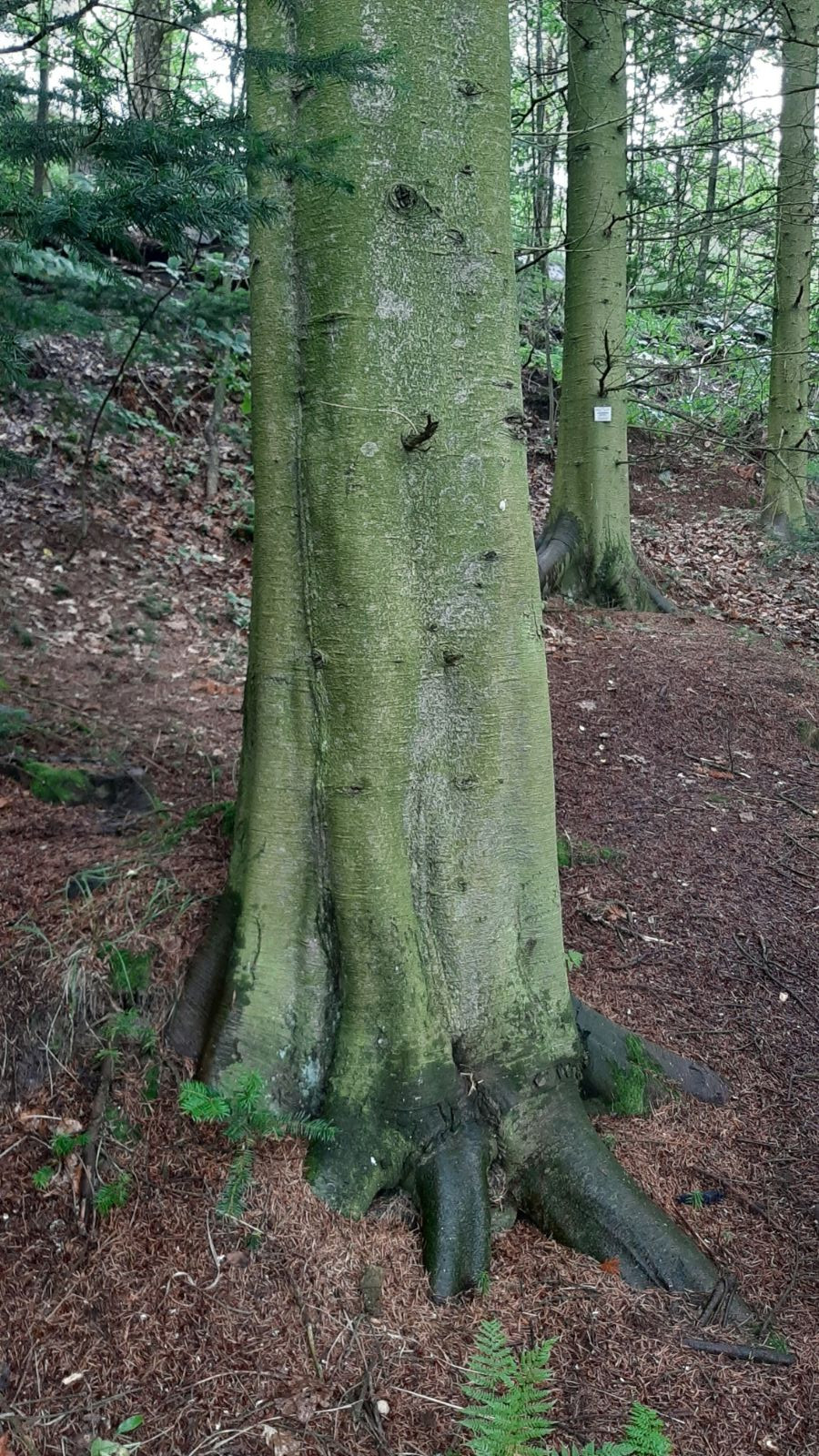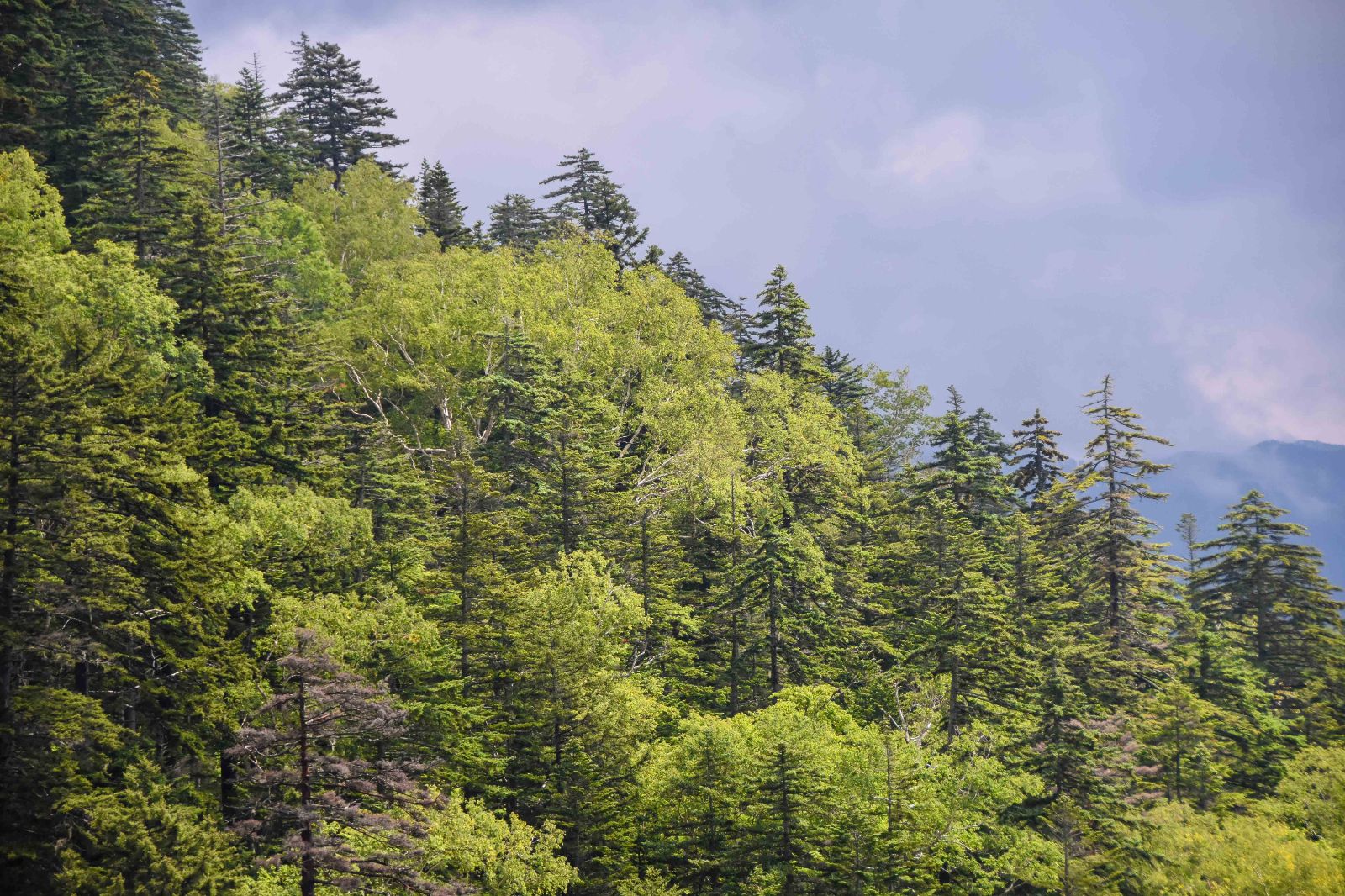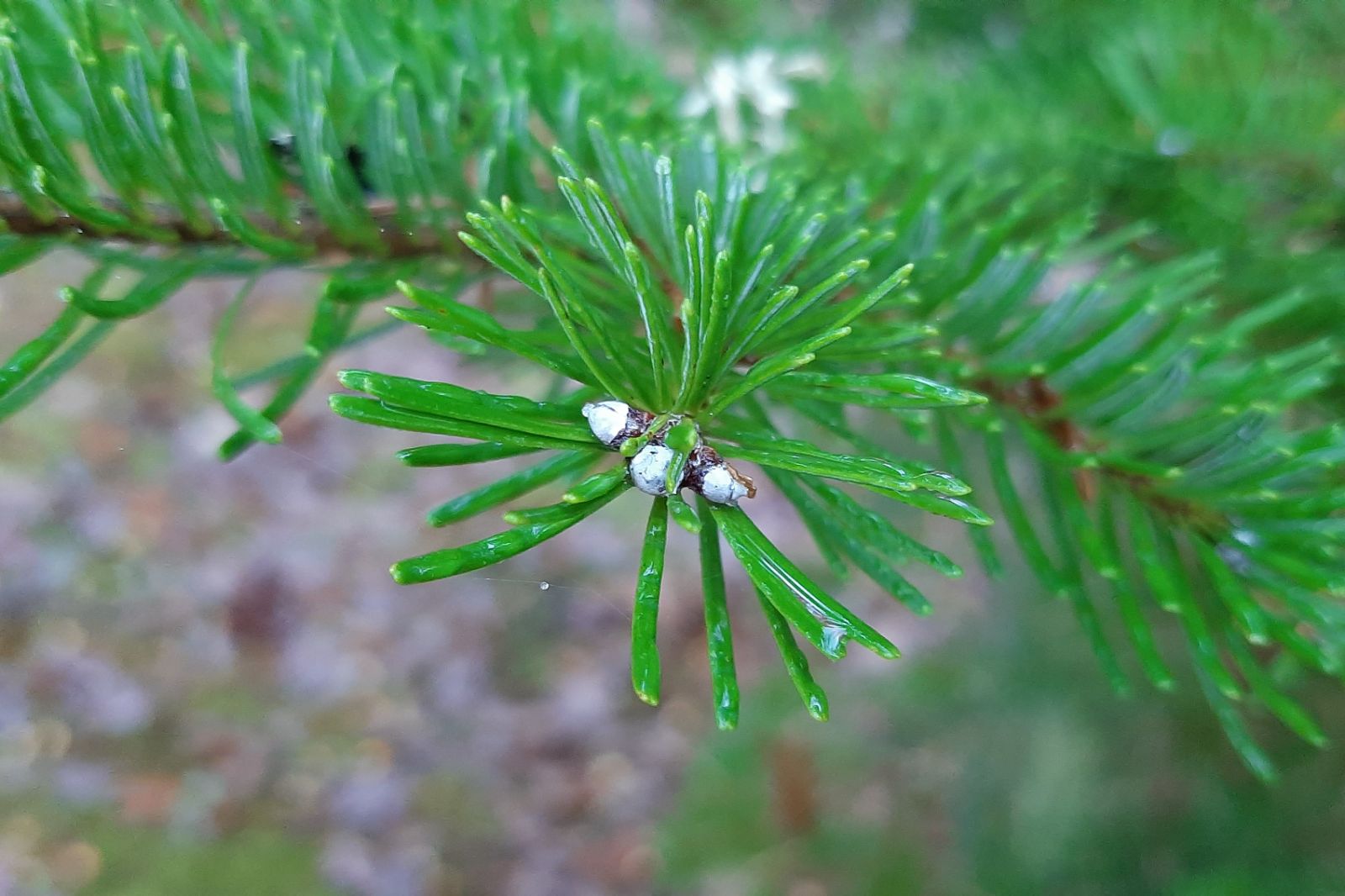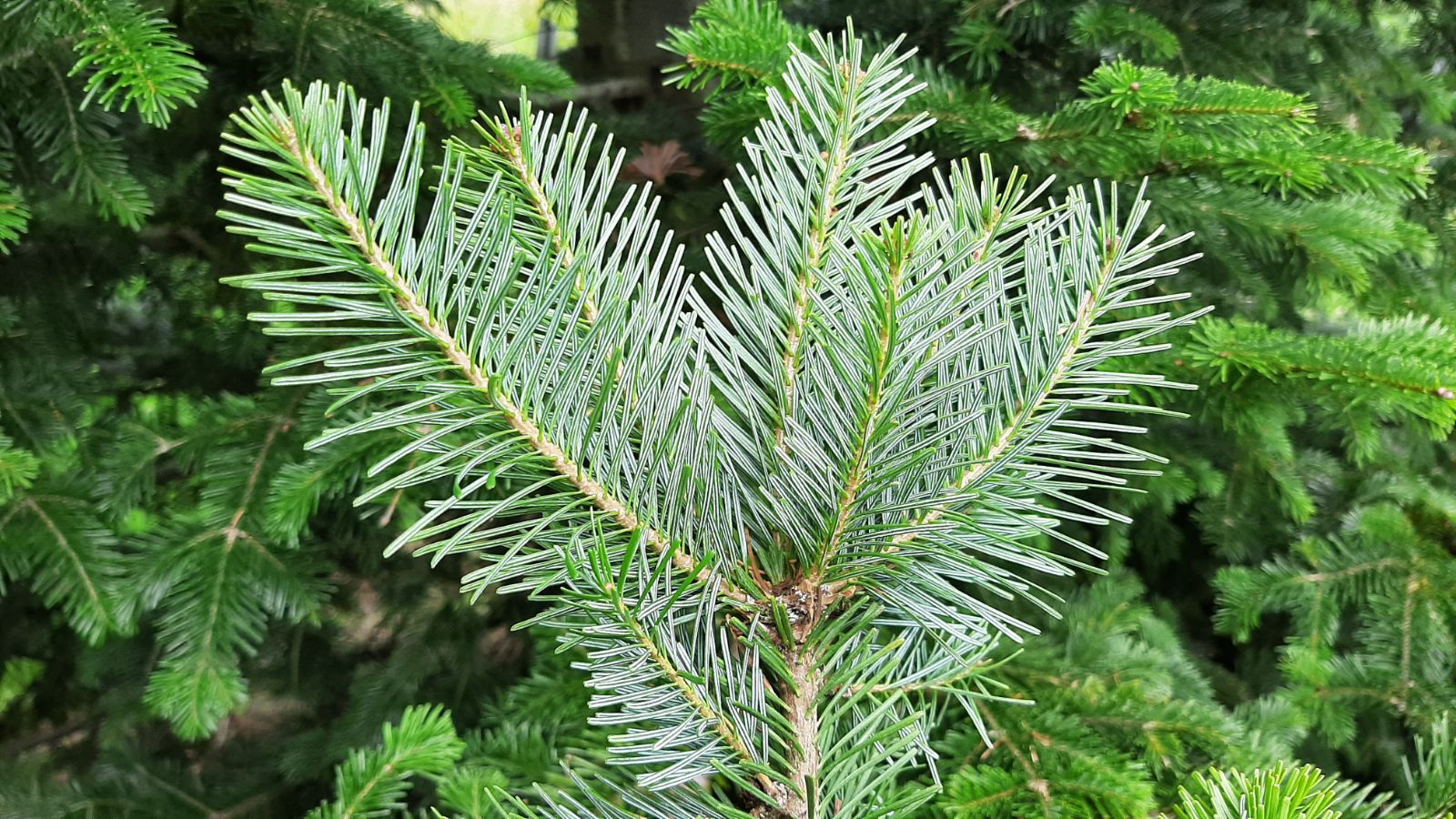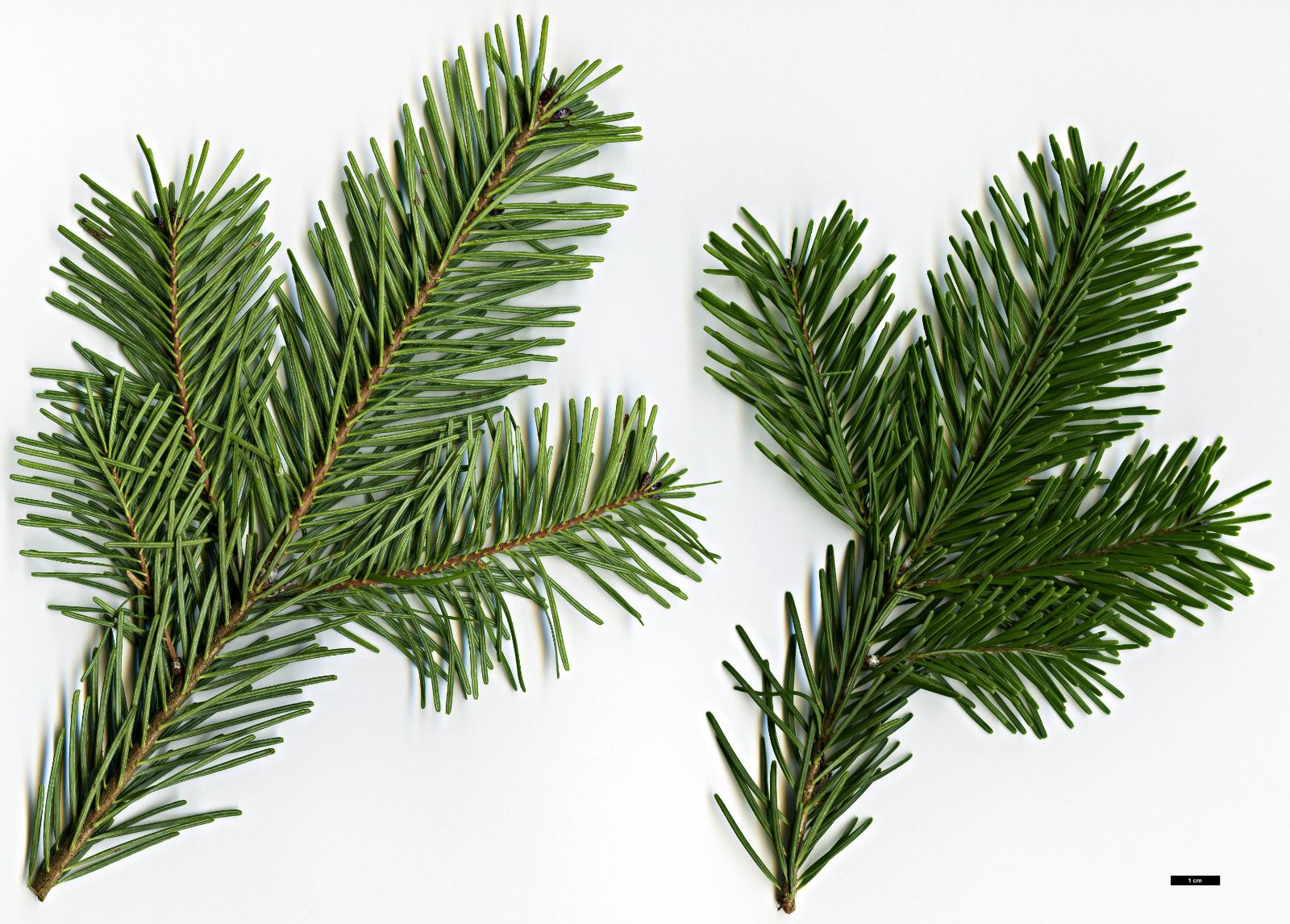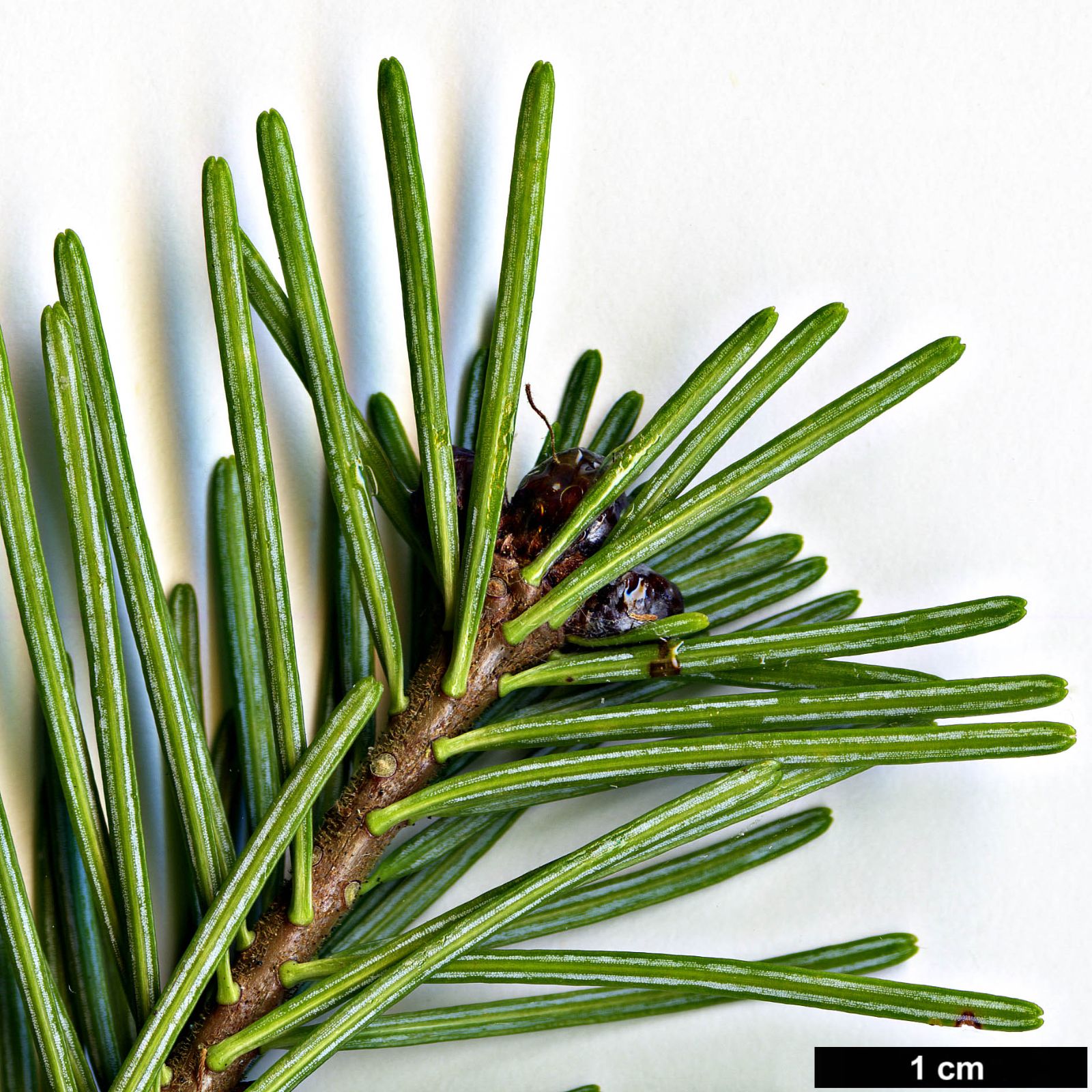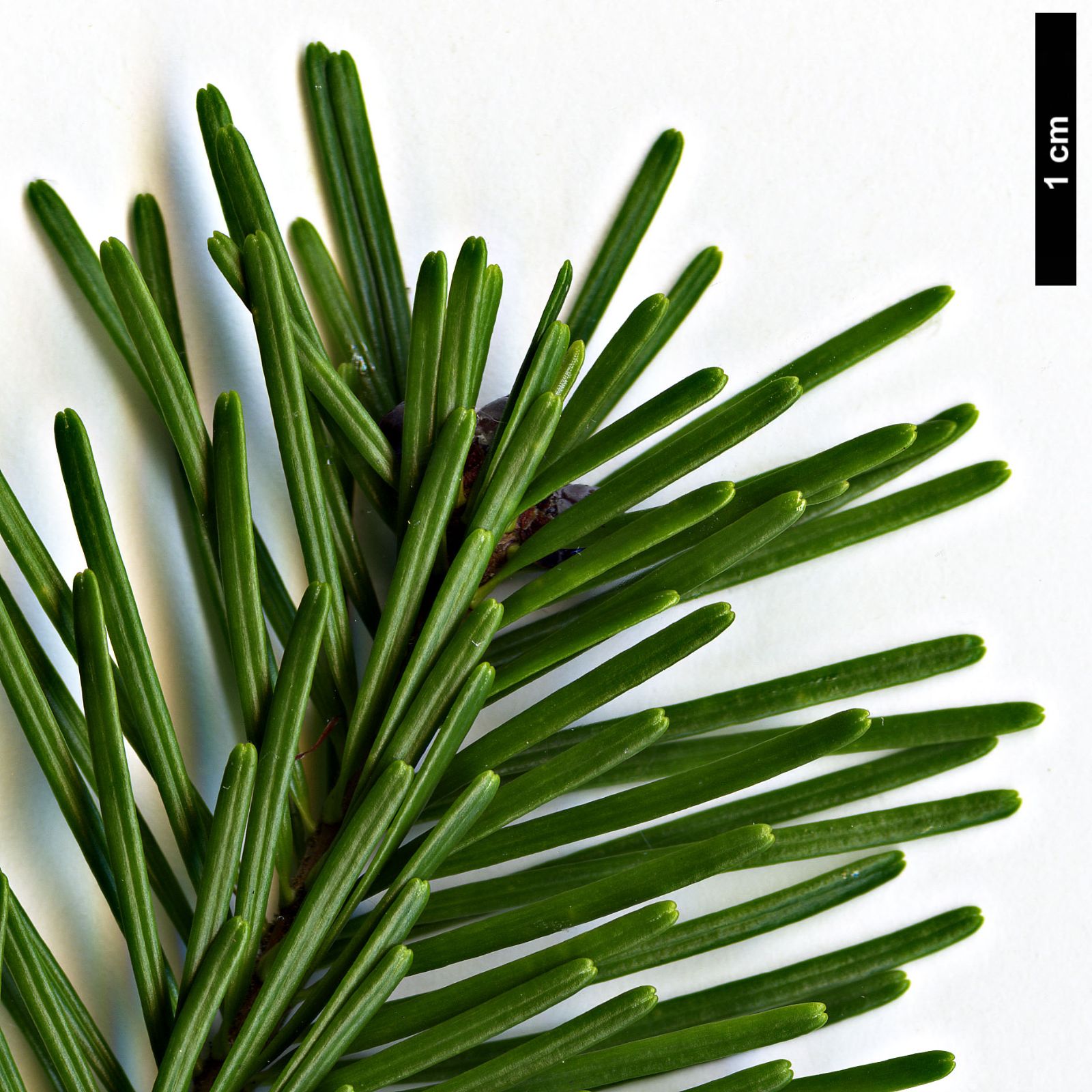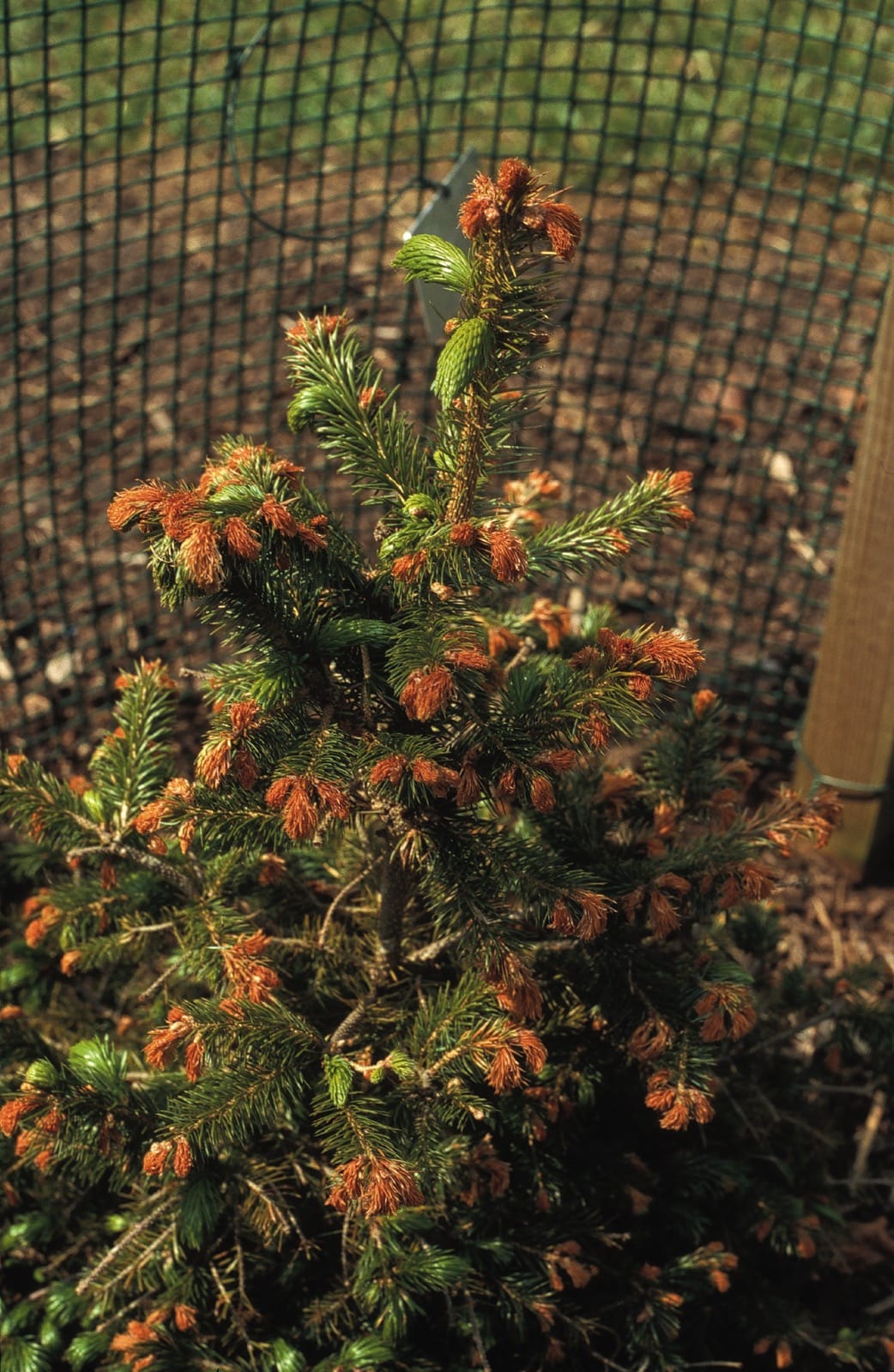Abies sachalinensis
Sponsor
Kindly sponsored by
Sir Henry Angest
Credits
Tom Christian (2021)
Recommended citation
Christian, T. (2021), 'Abies sachalinensis' from the website Trees and Shrubs Online (treesandshrubsonline.
Genus
Common Names
- Sakhalin Fir
- Sachalin Fir
- Pichta Sakhalinskaya
- Aka-todomatsu
Synonyms
- Abies veitchii var. sachalinensis Schmidt
- Abies sachalinensis var. corticosa Tatew.
- Abies nemorensis (Mayr) Miyabe & Kudô
- Abies sachalinensis var. nemorensis Mayr
Infraspecifics
Other taxa in genus
- Abies alba
- Abies amabilis
- Abies × arnoldiana
- Abies balsamea
- Abies beshanzuensis
- Abies borisii-regis
- Abies bracteata
- Abies cephalonica
- Abies × chengii
- Abies chensiensis
- Abies cilicica
- Abies colimensis
- Abies concolor
- Abies delavayi
- Abies densa
- Abies durangensis
- Abies ernestii
- Abies fabri
- Abies fanjingshanensis
- Abies fansipanensis
- Abies fargesii
- Abies ferreana
- Abies firma
- Abies flinckii
- Abies fordei
- Abies forrestii
- Abies forrestii agg. × homolepis
- Abies fraseri
- Abies gamblei
- Abies georgei
- Abies gracilis
- Abies grandis
- Abies guatemalensis
- Abies hickelii
- Abies holophylla
- Abies homolepis
- Abies in Mexico and Mesoamerica
- Abies in the Sino-Himalaya
- Abies × insignis
- Abies kawakamii
- Abies koreana
- Abies koreana Hybrids
- Abies lasiocarpa
- Abies magnifica
- Abies mariesii
- Abies nebrodensis
- Abies nephrolepis
- Abies nordmanniana
- Abies nukiangensis
- Abies numidica
- Abies pindrow
- Abies pinsapo
- Abies procera
- Abies recurvata
- Abies religiosa
- Abies salouenensis
- Abies sibirica
- Abies spectabilis
- Abies squamata
- Abies × umbellata
- Abies veitchii
- Abies vejarii
- Abies × vilmorinii
- Abies yuanbaoshanensis
- Abies ziyuanensis
Tree to 30(–50?) m, to 1 m dbh. Crown broad-pyramidal in young trees, pyramidal and often flat-topped in old trees. Bark of young trees smooth, shining brownish-grey, with prominent resin blisters; turning grey and fissuring with age, breaking into irregular plates which detach exposing fresh reddish-brown bark beneath. First order branches long, slender, ascending when young, lower branches horizontal with age. Branchlets slender, firm, reddish- or grey-brown, weakly ridged, pubescent in grooves. Vegetative buds ovoid, small, very resinous, reddish-brown. Leaves radially arranged, densely set, parted beneath the shoot, forwards above, 1.2–3.5 cm long, 1–1.2 mm wide, parallel-sided, glossy dark green and grooved above, with two narrow greenish-white stomatal bands beneath, apex abruptly emarginate, base strongly twisted. Pollen cones crowded, 1 cm long, yellowish with red microsporophylls. Seed cones often crowded, sessile or subsessile, ellipsoid-cylindrical, apex obtuse, rarely acute, 5–8 × 2–3 cm, dark purplish when immature, dark brown at maturity; seed scales reniform, 1 × 1.6 cm at midcone; bracts reddish and exserted when the cone is immature, reddish-brown and exserted or nearly included at maturity. (Farjon 2017; Debreczy & Rácz 2011; Liu 1971).
Distribution Japan Hokkaido Russia Sakhalin and the southern Kuril islands
Habitat Cool-temperate forests from sea level to c. 1700 m asl. The climate is continental or cold-maritime, with high precipitation including abundant snowfall. Common associates above c. 800 m include Picea jezoensis, P. glehnii, Larix gmelinii var. japonica, and Pinus pumila, while at lower elevations it can occur in pure stands or in mixed-broadleaf forest with Betula ermanii, Acer spp., Quercus mongolica, and Kalopanax septemlobus.
USDA Hardiness Zone 2-3
RHS Hardiness Rating H7
Conservation status Least concern (LC)
Taxonomic note Several major works (e.g. Farjon (1990, 2017) and Debreczy & Rácz (2011)) continue to recognise multiple infraspecific taxa in A. sachalinensis. Here only var. mayriana is recognised: var. gracilis is treated at species rank, and var. nemorensis is synonymised with the type. See discussion below.
Abies sachalinensis is distributed on the Japanese island of Hokkaido, and on Sakhalin and in the southern Kurile islands in Russia. In all these places the climate is influenced to some degree by the proximity of the north Pacific Ocean, which helps to make this species a marginally more forgiving subject across our area than its relative Siberian Fir. Nevertheless, these regions experience very cold winters and cultivated trees are still regularly damaged by spring frosts, but there is just enough maritime influence to give Sakhalin Fir a chance of forming good trees on the coastal fringes of northwest Europe, as well as in continental collections, but provenance is important (Grimshaw & Bayton 2009; Bean 1976).
In appearance Sakhalin Fir has been likened to A. veitchii of Japan; whilst undoubtedly similar they can easily be separated by Sakhalin Fir’s narrower leaves, far less white beneath on account of the thinner and duller stomatal bands. Confusion with A. nephrolepis and A. sibirica is more likely: From the former Sakhalin Fir differs once again in its narrower leaves, which are parallel-sided and much more densely set on the shoots, which themselves are ridged, not smooth; from the latter it differs in its darker green leaves and darker coloured shoots, which again are ridged, not smooth (Mitchell 1972). (See also Abies sibirica).
Separating the various infraspecific taxa that have been described is trickier. The first to be described was var. nemorensis, published in 1890; var. gracilis (originally published as a species, A. gracilis) followed in 1901; and var. mayriana in 1919 (Farjon 2017). The ‘rather trivial technical characters’ (Grimshaw & Bayton 2009) used to separate these are given in a key in New Trees (p. 58) and this is adapted below, incorporating several updates. Chief among these is the decision to treat A. gracilis at species rank, and to reduce var. nemorensis to synonymy with var. sachalinensis. The variety mayriana (and nemorensis when it is recognised) may be found with the type on Hokkaido and Sakhalin, and possibly in the southern Kuriles, too. A. gracilis, however, is remarkably disjunct, isolated some 1200 km from its nearest relative in a most unlikely location, causing some to question whether it is truly indigenous (Farjon 2017). It seems better, therefore, to follow Debreczy & Rácz (2011) in treating A. gracilis separately, at least while so many questions about it remain unanswered; it is barely cultivated. Liu (1971) recognised var. mayriana but not var. nemorensis, which he synonymised with the type. Var. nemorensis is sometimes distinguished solely on the basis of having its bract scales fully included (cf. partially or fully exserted) but there seemed to be sufficient variation in this character throughout native populations to have left Liu unconvinced; indeed, his account for var. mayriana reads as though he accepted even this with some reluctance, but at least with this taxon there were additional differences in bark characters and bract colour to convince him (Liu 1971). Continued recognition of var. mayriana is justifiable on the basis of three characters (two good, one less so) but continued recognition of var. nemorensis, on the basis of a single character known to be variable across the wild populations, is bereft of logic.
Because of the relatively short-lived nature of A. sachalinensis in cultivation, and because var. mayriana occurs together with the type, it is impossible to say which taxon some of the early introductions represented. As such, historic introductions are discussed here as var. sachalinensis, with discussions under var. mayriana restricted to the very few known trees that exist. Their cultural requirements are the same.
Sakhalin Fir was described to science in 1868 when the Baltic German scientist Carl Friedrich Schmidt (Fyodor Bogdanovich Schmidt in Russian; 1832–1908) published the name, originally as a variety of A. veitchii (Masters later elevated it to species rank in 1879) (Farjon 2017). It isn’t clear whether Sakhalin Fir was introduced to collections in western Russia prior to the species’ introduction to Britain, which took place in 1879, though it seems likely that it was. Even at the time of Sakhalin Fir’s ‘discovery’ it was probably being grown as an ornamental in its native Hokkaido (Moser-Reischl et al. 2019) while A. sibirica had already been grown in western Russia and adjacent regions for c. 50 years. Despite their many similarities, it would be surprising if this very cold-tolerant tree had not been introduced to gardens in the west of the Empire at the first opportunity. Both species have long been commonly grown in Finland, as ornamentals and in productive forestry (mustila.fi). Russian nurseries and seed merchants could have been the source of the first trees planted in various countries around the Baltic Sea, but as a relatively short-lived species even in optimum conditions, no old trees are known that could testify to this theory.
No original trees are known in the UK or Ireland, either. It was introduced here in 1879, when Charles Maries sent seed to the Veitch nurseries having encountered the species the previous year on Hokkaido (Elwes & Henry 1906–1913). Owing to the severity of the winters in its native range Elwes was not optimistic about Sakhalin Fir’s chances in the maritime climate of the UK and Ireland; he had observed far better trees across the Atlantic in the harsher climate of Massachusetts, but he commented on the few that were known, including one at Fota on the south coast of Ireland, and another in the much colder climate of Murthly Castle, Perthshire, 4.9 m in 1907 when aged ten years but ‘not looking healthy’ (Elwes & Henry 1906–1913). The unhealthy-looking tree at Murthly persisted for several more decades and was 17 m × 0.36 cm in 1962 (Bean 1976), but 16 m × 0.38 cm in 1970 (Mitchell 1972) becoming moribund and lost soon after. According to the Tree Register the largest on record from Britain and Ireland was a tree that grew at Headfort in Co Meath, Ireland, 26 m in 1980, while the largest extant trees recorded are two in a plot at Crarae, Argyll, Scotland, 22 and 23 m in 2012 (Tree Register 2020). However, the Tree Register also records several impossibly large A. sibirica from collections across the UK which more likely belong to this species. The largest of these is a 25 m tree at Brechfa in Wales. The height of the Brechfa and Crarae trees is probably due to their growing ‘forestry style’, in densely planted trial plots that have caused the trees to become tall and thin; one of the more handsome examples grown as a specimen is at Dawyck Botanic Garden in the Scottish Borders, 20 m in 2014 (Tree Register 2020).
A. sachalinensis has exceeded 30 m height at Tammisaari in Finland (monumentaltrees.com) and across the Baltic in eastern Sweden, where it is better than on the milder west coast (Aldén 2006). An attractive grove, planted between 1957 and 1962 at the Landscape Arboretum of Gothenburg Botanic Garden, averaged 20.5 m height in 2005. These trees were grown from seed gathered in Hokkaido in 1953 and 1957, where the parent trees were recorded as reaching up to 50 m height, taller than the ultimate height usually given in textbooks (Aldén 2006). Despite Gothenburg’s cold-maritime climate Sakhalin Fir is still subject to spring frost damage here, and many trees have been lost to storms (Aldén 2006) which somewhat mimics a feature of their ecology in the wild. Warren and Johnson reported two from the Arnold Arboretum in 1988, then ‘105 and 93 years old and 17 and 18 m tall, respectively’ (Warren & Johnson 1988), giving a date of introduction to North America no later than 1883. It is now represented at the Arnold by multiple accessions, including some relatively recent gatherings, and scions from old trees that were originally raised from seed sent back from Japan by Sargent in 1892 (Arnold Arboretum 2020).
Key to Abies sachalinensis and close relatives | ||
| 1a | Leaves with marginal resin canals | Abies gracilis |
| 1b | Leaves with medial resin canals | 2 |
| 2a | Bark of mature trees not fissured; seed cones with yellowish-green bracts, prominently exserted and recurved | Abies sachalinensis var. mayriana |
| 2b | Bark of mature trees fissured into irregular scales, intermittently shed; seed cones with reddish bracts, included or exserted | Abies sachalinensis var. sachalinensis |
'Gedreht'
Auders & Spicer (2012) list this unusual, recent selection. Their description (p. 162) and illustrations (p. 161) show a small plant with the leaves initially borne fowards in the usual fashion, but then curving backwards until their undersides are fully exposed and the tips point backwards down the shoot. This is the same bizarre aberrance for which the much more familiar A. koreana ‘Horstmann’s Silberlocke’ was named. Unfortunately, this is almost certainly a misidentification, for the leaf undersides illustrated in Auders & Spicer (2012) are brilliant white, quite unlike A. sachalinensis, and further the leaves are much wider than in that species. It most likely belongs to A. veitchii or A. nephrolepis, or is a hybrid involving one of those species.
var. mayriana Miyabe & Kudô
Differing from var. sachalinensis in the following ways: bark whitish grey, not fissured in old trees; seed cones pale purplish; bracts yellowish-green at first, prominently exserted and reflexed. (Farjon 2017; Liu 1971). It is most abundantly distributed in southwest Hokkaido but occurs with the type as far north as the southern part of Sakhalin and in the southernmost Kuriles. (Liu 1971).
Distribution, habitat, hardiness, and conservation status as for var. sachalinensis.
Only a handful of collections are known that ostensibly represent this variety. Among these, ESUS 210 from Sakhalin in the most widely distributed in the UK, represented at collections including Kew, where it has not done well, and at Dawyck, where it is growing slowly but steadily having finally gotten above the frosts (Grimshaw & Bayton 2009). Several accessions are grown at the Arnold Arboretum, where growth rates seem quite reasonable; a tree accessioned in 2006 (133–2006*C) was 3 m × 5 cm dbh when last measured. This was propagated from an old tree, accessioned in 1932 (lineage 500–32) which was in ‘fair’ condition and 17.5 m when last measured (Arnold Arboretum 2020).

